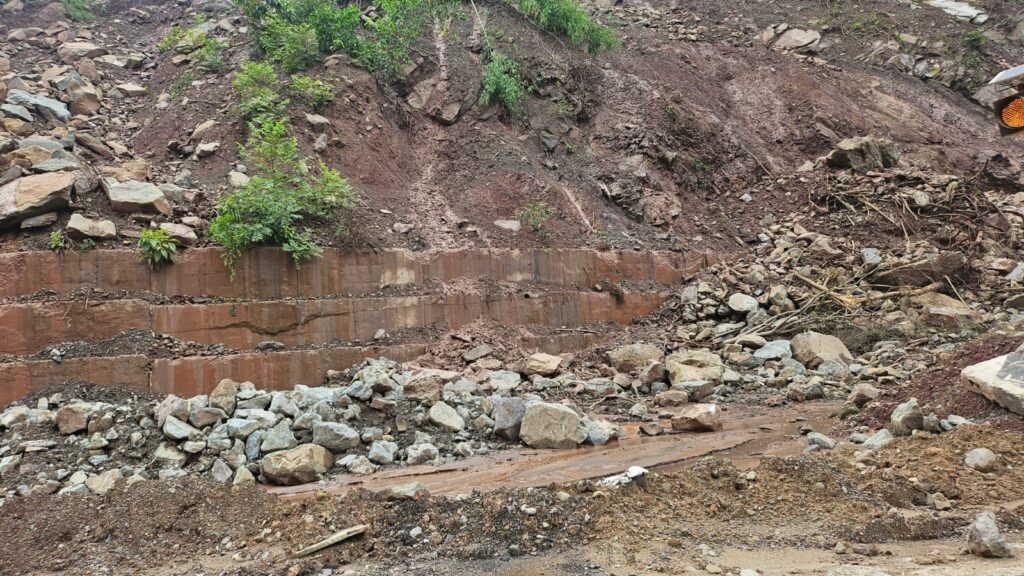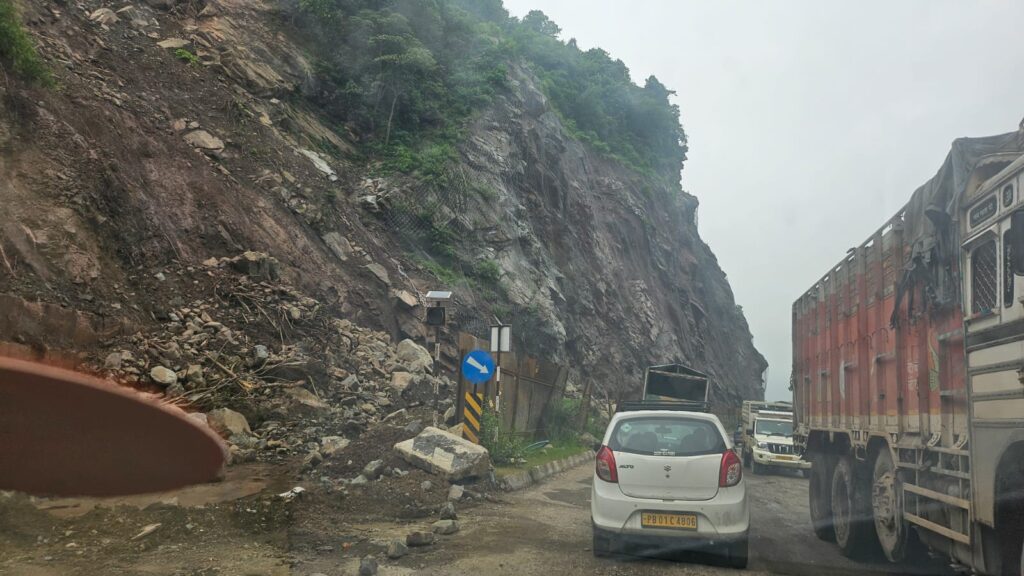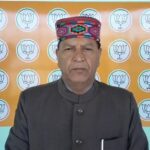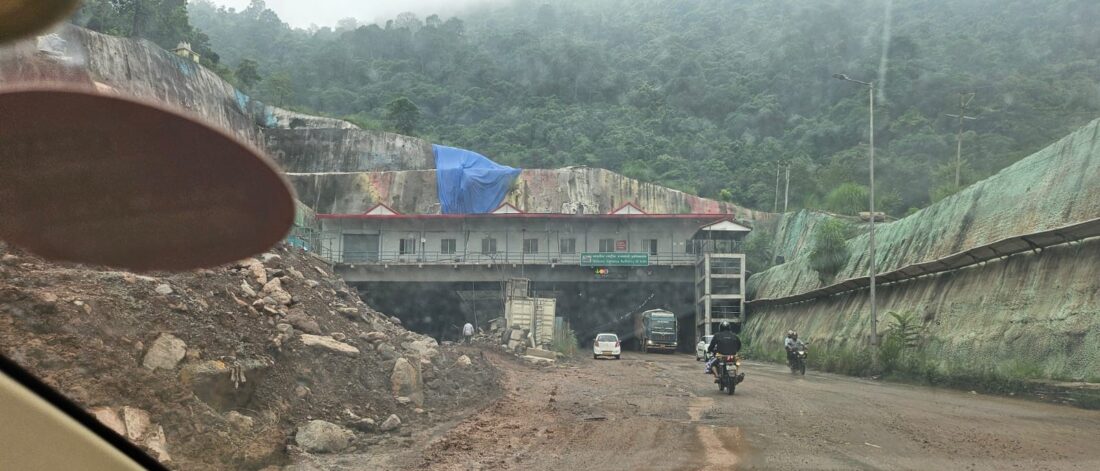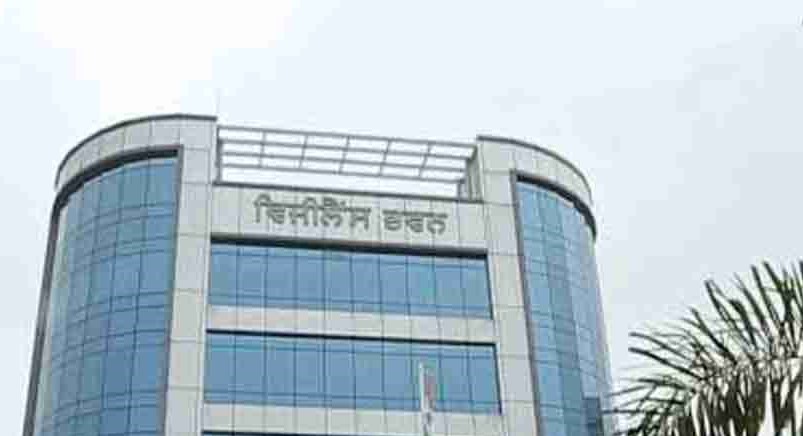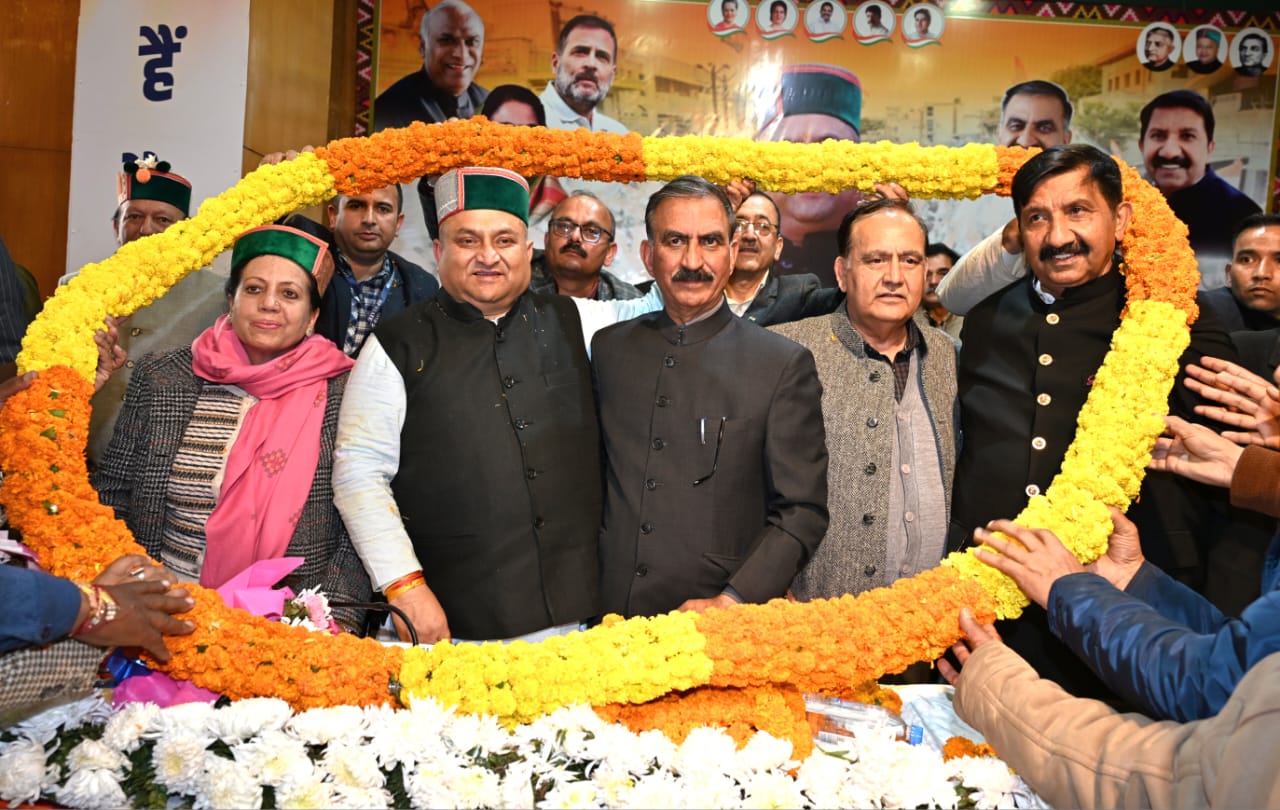
The North News
Bilaspur, August 18
Every time I travel to Himachal Pradesh, I feel the same irresistible pull — the mountains calling me back. There is something timeless about the dense forests, the cool rush of rivers and the breath of fresh air that reminds one of life’s simplicity and fullness. Yet this monsoon, the mountains spoke a different language. The serene landscapes were overshadowed by destruction: swollen rivers, landslides cutting off roads, and the aftermath of devastating cloudbursts.
I experienced some of this fragility firsthand while travelling from Chandigarh to Bilaspur along the national highway. The road, now punctuated by three newly built tunnels, has transformed connectivity in Himachal. These tunnels are not minor conveniences; they are lifelines. Before their construction, journeys to Bilaspur, Mandi, Kullu or Manali were hours longer, plagued by traffic jams and endless diversions. Now, time has been cut by three to five hours, easing life for locals and providing a vital artery for the tourism industry.
Yet the journey also revealed how development, if pursued without caution, can deepen vulnerability. Near Tunnel-1, Tunnel-2 and Tunnel-3, I saw mountain slopes cracked and bleeding from recent rains. Water streamed down onto the highways, forming dangerous pools. Large boulders, loosened by landslides, had rolled perilously close to the road. Two-way traffic was reduced to one lane in many stretches, as workers struggled to clear accumulated mud and debris. Vehicles moved at a crawl. It was a sobering picture of how quickly infrastructure can be undermined by nature.
This year has been particularly cruel. Himachal has recorded at least 36 cloudbursts across six districts — Mandi, Kullu, Chamba, Kinnaur, Lahaul-Spiti and Shimla — alongside 74 flash floods and 63 landslides so far. More than 100 lives have been lost and the state has suffered estimated damages of over ₹2,000 crore. Mandi, once better known for its apple orchards and temples, has become the epicentre of tragedy.
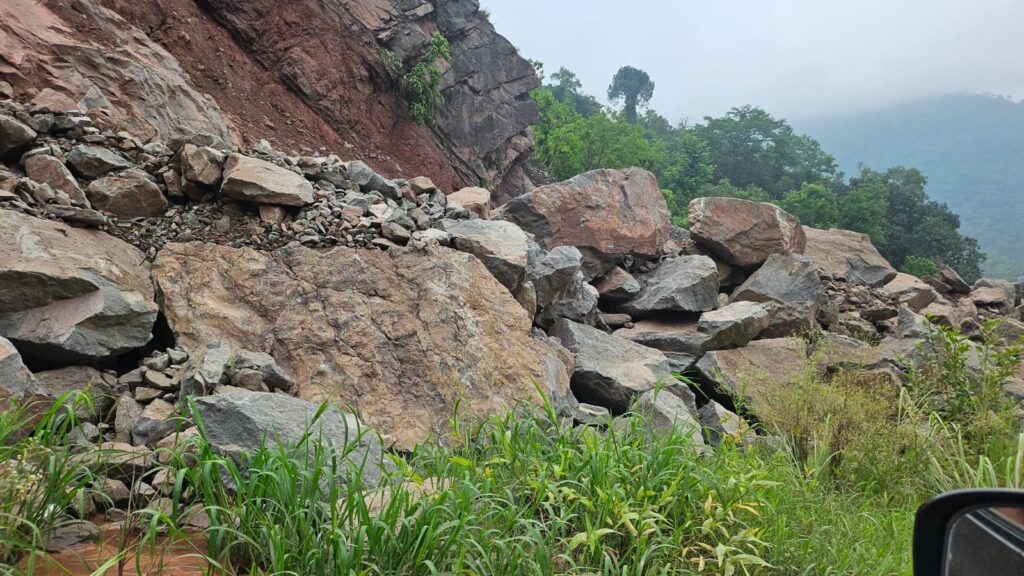
This paradox lies at the heart of Himachal’s dilemma. Roads, tunnels and bridges are indispensable for the state’s economy. Without them, tourism would collapse, agricultural produce would struggle to reach markets, and remote communities would remain isolated. But infrastructure that ignores the environment invites the very disasters it is supposed to mitigate.
Environmental scientists have long warned that unchecked deforestation, indiscriminate cutting of hillsides and unscientific mining in seasonal rivulets destabilise fragile Himalayan slopes. These practices often continue under political shelter, their risks conveniently ignored in the name of development. Hydropower projects must be undertaken with caution, ensuring that environmental impacts are carefully assessed and mitigated
The Beas and Sutlej rivers, both running in spate, carried not only floodwaters but also sand, stone. The cracks along mountainsides, the pools of rainwater on highways, and the sluggish traffic were not merely inconveniences. They were symptoms of a deeper imbalance between development and environmental stewardship.
The problem is not development itself, but the absence of discipline and political will. Every new tunnel, every widened highway, should begin with a rigorous environmental study — not a perfunctory formality, but a serious scientific assessment. Mining needs enforcement beyond token bans. Illegal cutting of trees must be stopped, not overlooked under local patronage.
Disaster management is another area where intent often falls short of need. When landslides occur, roads must be cleared quickly to restore access. Yet in many stretches, I saw work proceeding at a slow pace, forcing vehicles into long delays. For local people, these are not mere inconveniences: blocked roads cut them off from hospitals, schools and markets. For tourists, delays translate into a loss of confidence, undermining a sector that is the state’s economic backbone.
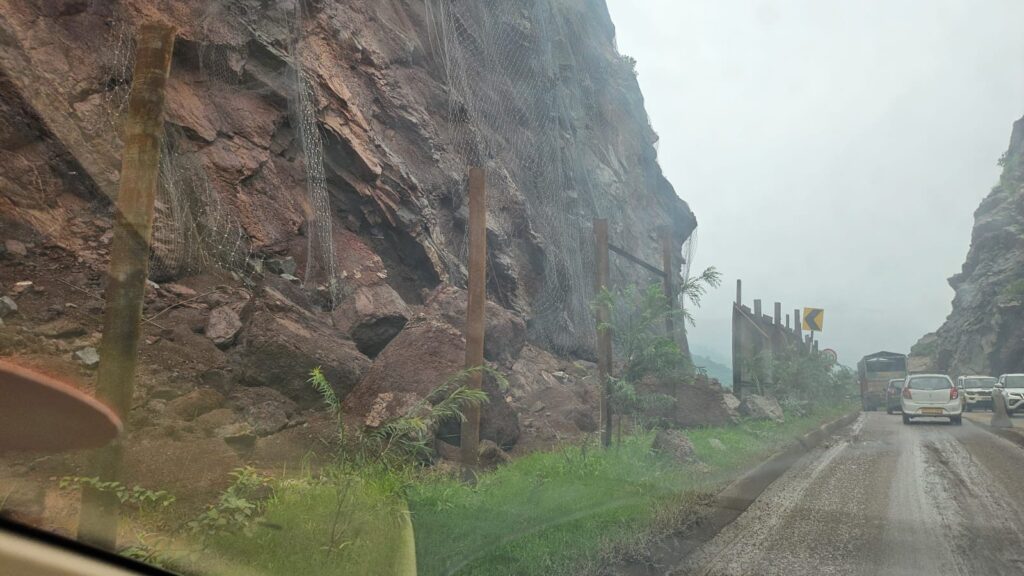
Chief Minister Sukhvinder Singh Sukhu has said he raised the issue of cloudbursts with New Delhi, and central teams have inspected the damage. But beyond symbolic visits, what matters is sustained action. Relief compensation must be timely and transparent. Roads and bridges must be rebuilt with resilience in mind, not as short-term fixes that collapse with the next monsoon. Above all, coordination between the state and centre must move from episodic cooperation to long-term planning.
Himachal’s economy depends heavily on visitors. For decades, the promise of safe roads, clean air and breathtaking landscapes has drawn millions. Yet that promise is fragile. Tourists need to know that if disaster strikes, they will be protected, not stranded on highways or left waiting for relief. Building this confidence requires visible and credible governance.
During my journey, I spoke with fellow travellers who were both awed and anxious. The tunnels had made their journey smoother, but the landslides unnerved them.
Development is not optional in Himachal; it is essential. But development without environmental respect is reckless. The state’s experience this monsoon offers a warning: ignore the balance, and the cost will be paid in lives, livelihoods and landscapes.
The tunnels through Bilaspur are marvels of engineering. But along their approaches, the mountains seem to be crying — rocks cracking, slopes bleeding, rivers swelling beyond their banks. These images are not just of a state battered by monsoon, but of a governance failure to integrate development with sustainability.
Strong political will is the only way forward. It means enforcing laws against illegal mining, investing in scientific disaster preparedness, and prioritising environmental studies before projects begin. It also means rapid, coordinated action when calamities strike. Without this will, every new road and tunnel risks becoming another fragile thread in a fabric already stretched thin.
As I returned from my journey, I was reminded that the mountains do not reject development. But they demand respect. To continue treating them as obstacles to be cut, mined and ignored is to invite heavier losses in the future. Himachal Pradesh can still be a place where economic growth and natural beauty coexist — but only if its leaders act with resolve, and if the state and centre commit to partnership beyond platitudes. Otherwise, the mountains will keep crying. And the people of Himachal will keep paying the price.
